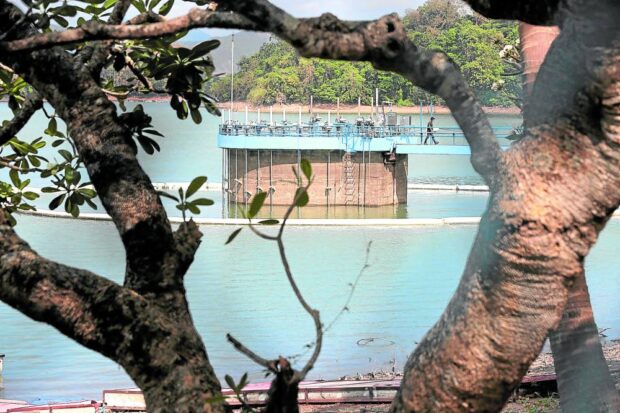Beware of disease outbreaks amid intense heat, water shortage – DOH

PRECIOUS SOURCE Water elevation at La Mesa Dam in Quezon City drops to 76.49 meters on Tuesday as concessionaires advise consumers to conserve water during the dry season and to brace for possible supply interruptions. —GRIG C. MONTEGRANDEThe Department of Health (DOH) on Tuesday warned against a possible outbreak of gastrointestinal, and food and waterborne diseases amid the threat of El Niño and a water shortage.
MANILA, Philippines — The Metropolitan Waterworks and Sewerage System (MWSS) assured the public that there would be no water crisis this year, with Angat Dam enjoying a “comfortable water level.”
In a press briefing, DOH officer in charge Maria Rosario Vergeire said that communities should be wary about their sources of water during the dry season because “if there is a water crisis, sources of safe water will not be enough.”
“And this will start epidemics of gastrointestinal problems like cholera, typhoid fever, as well as food and waterborne diseases like bloody diarrhea and hepatitis,” she added. “If you are not sure whether your source of [drinking] water is safe, boil the water first before drinking it, just to be sure.”
There is also a high possibility that these illnesses will rapidly spread through communities because of the looming El Niño phenomenon, which Vergeire attributes to climate change.
“Climate change is a very critical [issue] … If our environment will be affected by changes in our climate, definitely there will be an [outbreak] of illnesses,” she said.
Article continues after this advertisementPresident Marcos last week sounded the alarm over a water crisis because of the government’s failure to address a supply shortage in many areas.
Article continues after this advertisementEnough supply
But according to MWSS Administrator Leonor Cleofas, the country will have enough water, not only this summer but until the end of the year.
“We are at a comfortable level… Our prognosis is good based on simulations we’ve done; Angat Dam has enough water,” Cleofas told reporters.
As of Tuesday, the Philippine Atmospheric, Geophysical and Astronomical Services Administration (Pagasa) website said that water at the dam remained at normal levels.
Cleofas added that a water crisis could be further prevented once the controversial New Centennial Water Source-Kaliwa Dam Project in the Sierra Madre mountain range begins operating in 2027.
The 73-meter-high Kaliwa Dam, which will be built in General Nakar, Quezon province, is 24-percent complete. It is expected to supply 600 million liters of water daily to Metro Manila and nearby areas, reducing dependence on Angat Dam.
Heatstroke, stress
With parts of the country experiencing “above-normal” increases in the heat index since Pagasa officially declared the start of the dry season last week, Vergeire reminded the public to watch out for symptoms of heatstroke or heat stress.
In heat stress, a person may just feel dizzy or nauseous. Heatstroke, on the other hand, affects multiple organs and causes life-threatening symptoms such as palpitations, difficulty in breathing and fainting.
Vergeire urged people to limit their sun exposure, especially between 10 a.m. and 4 p.m., and to stay hydrated to “restore the electrolytes lost when you sweat.”
She also reminded school cafeterias to observe proper food preparation and to choose dishes which do not easily spoil. Teachers should also ensure sufficient ventilation in classrooms and impose water breaks so students can rehydrate, she said.
The Alliance of Concerned Teachers (ACT), meanwhile, said that an online survey among 11,706 public school teachers found that the majority of students could not focus on their lessons because it was too hot inside their classrooms during summer.
In the group’s survey on classroom conditions during the dry season, 10,140 teachers or 86.7 percent of respondents said that students found it hard to concentrate due to the heat.
ACT chair Vladimer Quetua said that many students and teachers had complained of headaches, dizziness and nose bleeding while schools had no proper health facilities and personnel.
Absenteeism, he said, is also becoming a “more serious problem” with 40 percent or four in every 10 teachers reporting that more students had missed classes since the start of summer.
ACT said that the survey respondents suggested various solutions, including changing class schedules to avoid the hottest hours during the day or implementing blended learning through the alternative conduct of in-person classes in the morning and distance learning at home.
The teachers also pushed for reverting the school calendar to its prepandemic schedule when the school break coincided with the dry season.